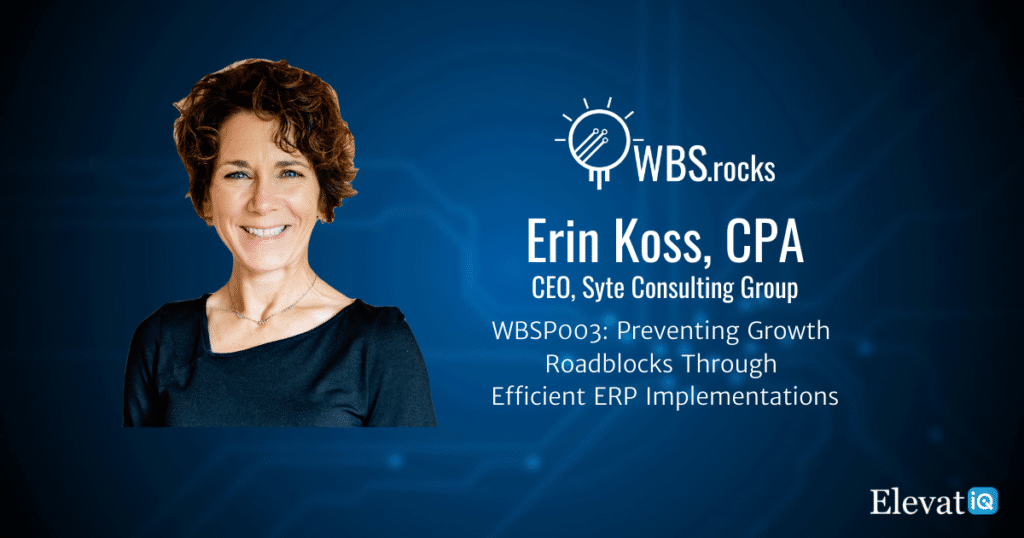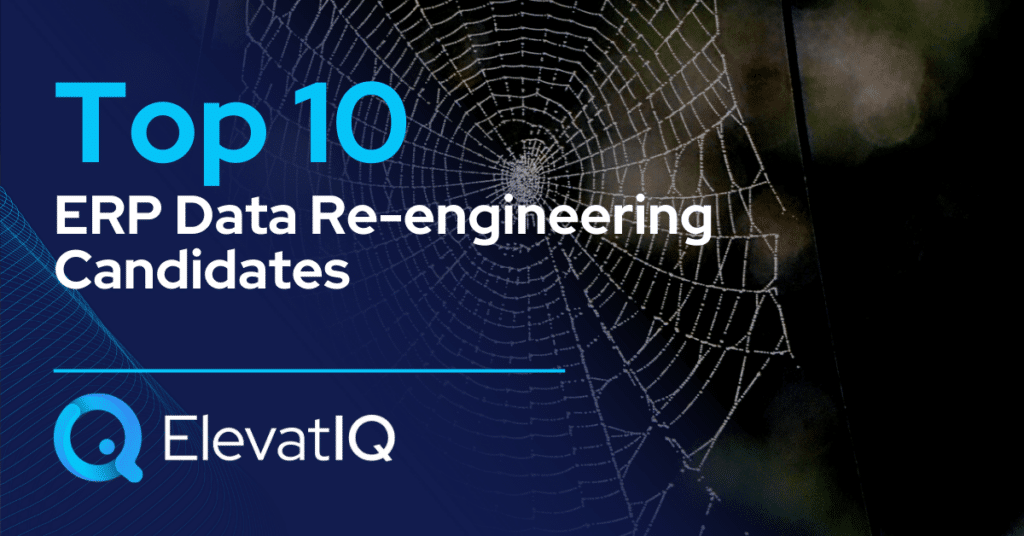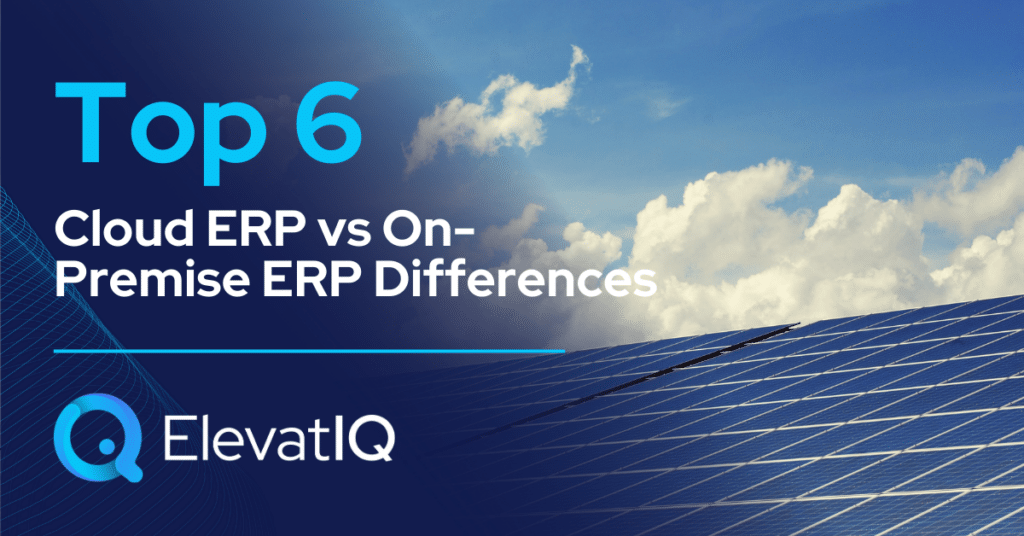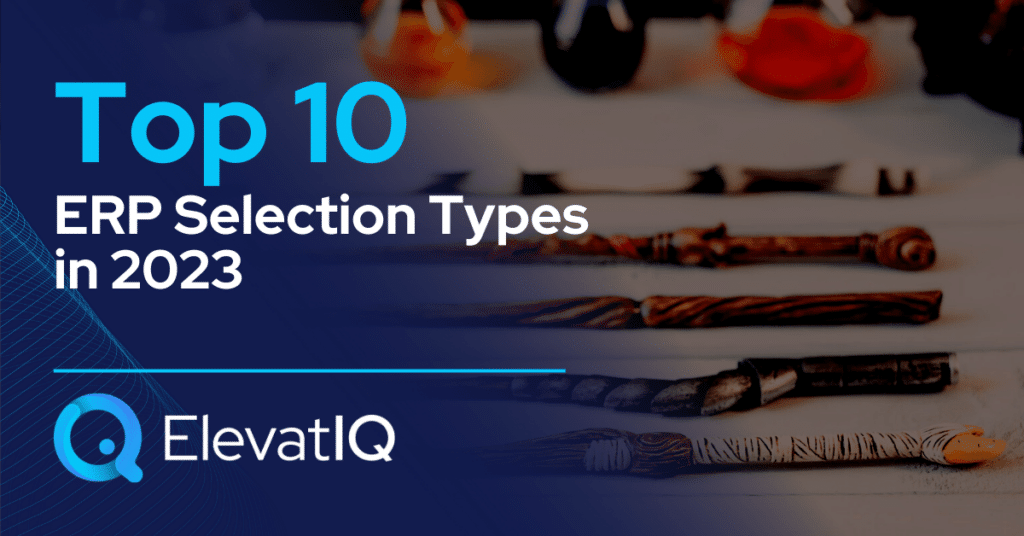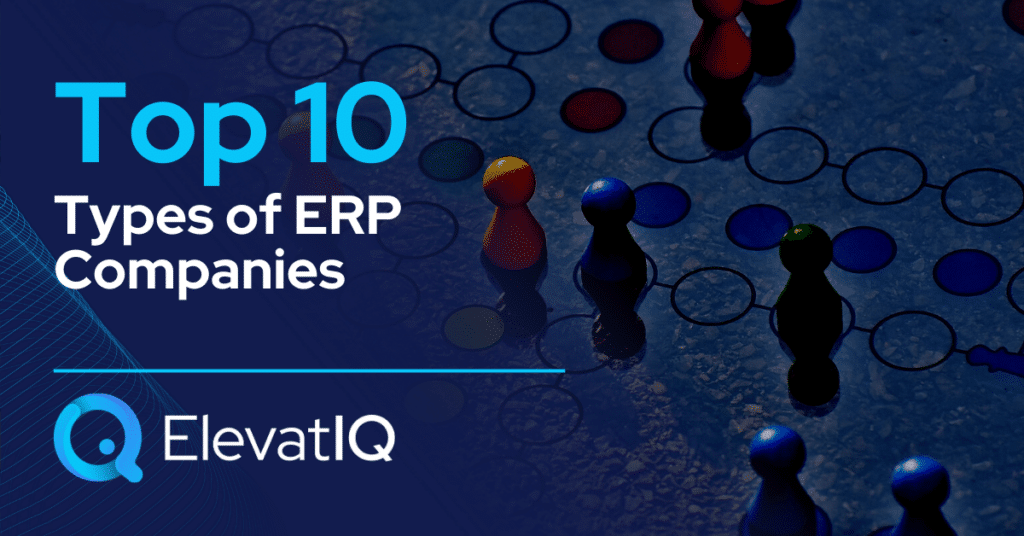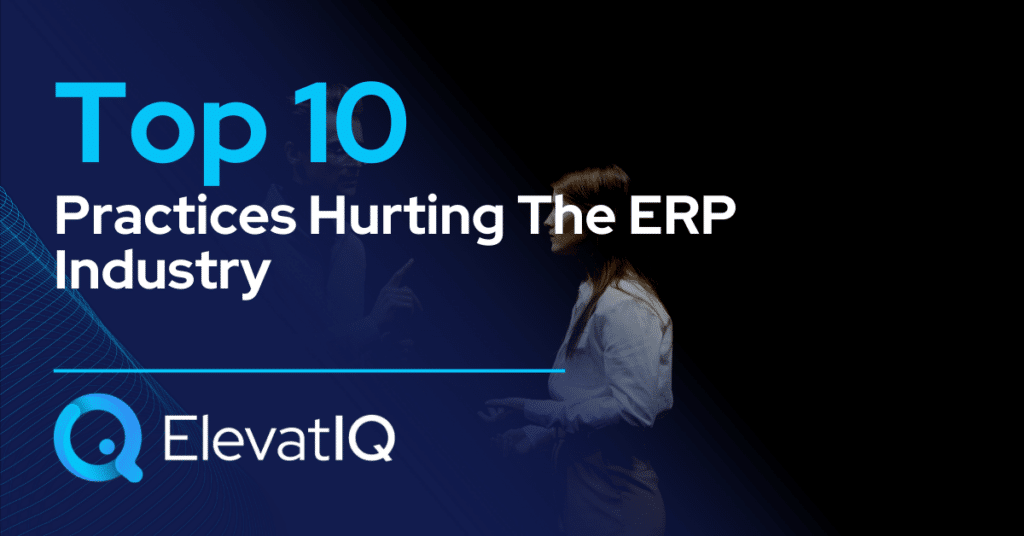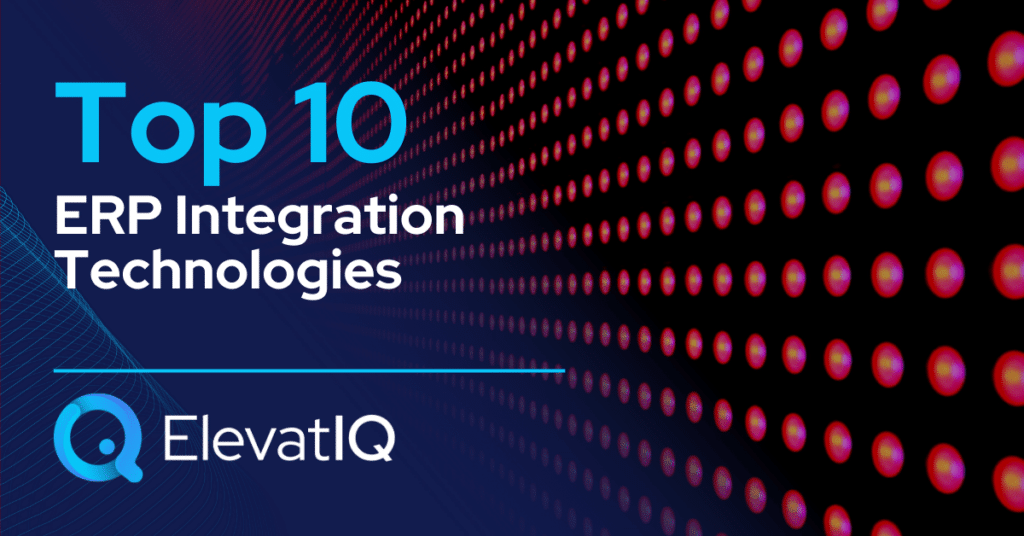In this episode, we have our guest Erin Koss, CPA from Syte Consulting Group who brings a unique and fresh perspective through her recent e-book on how to execute ERP project implementations during COVID-19.
She takes us through the journey of an ERP project implementation that they planned before COVID but continued despite the unforeseen challenges and made a massive success for the client in the end. If you would like to learn more about how to manage ERP project implementation without that being a roadblock for your growth, this episode is a must-listen for you.
Chapter Markers
- [0:00] Intro
- [2:48] Overview of Erin’s ERP project eBook
- [7:41] Business overview of the eBook’s client’s ERP project
- [14:19] Overview of client’s ERP project selection process
- [17:21] Challenges with expertise on multiple ERP systems
- [23:05] Changes in ERP project assumptions with COVID
- [24:51] Learnings from remote ERP project implementations
- [32:48] Closing thoughts
- [35:53] Outro
Key Takeaways
- While the manufacturers may be absolute experts in production, and purchasing and order entry, things like this order-to-cash, procure-to-pay some of these key and core business processes within their own organization, translating that to how do I get from a smaller ERP system to a bigger ERP solution is a challenge.
- ERP products have a lifecycle like any product in the marketplace. And if you’re not playing in that world, every day, there’s a lot of things you don’t know, you don’t know, and you can miss.
- The biggest challenge companies are having is how do we how do we collaborate, communicate and connect. Because if you want to get the things done that matter to your organization, you need to make sure these three things happen. And those three things are almost strictly related to people, as opposed to whatever it is you’re actually trying to do.

Subscribe and Review
Apple | Spotify | Stitcher | Google Podcasts | Deezer | Player FM | Castbox
About Erin
Erin Koss, CPA is the CEO of Syte Consulting Group. She helps family-owned manufacturing companies scaled with vision and integrity.
Taking a people-first process and Technology Readiness approach, Erin and the team at Syte ensure companies are ready to take on big change initiatives like ERP project, and technology upgrades before diving in headfirst.
A native to the Pacific Northwest, she enjoys traveling, being outdoors, hiking, biking, rowing, and supporting the local culinary scene.
Resources
Full Transcript
Erin Koss 0:00
If you want to get the things done that matter to your organization, those three things need to happen. And those three things are almost strictly related to people as opposed to whatever it is you’re actually trying to do. So if you can get above what it is you’re actually trying to do and recognize that it’s again communication, connection, and collaboration.
Intro 0:19
Growing a business requires a holistic approach that extends beyond sales and marketing. This approach needs alignment among people, processes and technologies.
So if you’re a business owner, operations or finance leader looking to learn growth strategies from your peers and competitors, you’re tuned into the right podcast. Welcome to the WBS Podcast, where scalable growth using business systems is our number one priority.
Now, here is your host, Sam Gupta.
Sam Gupta 0:55
Hey everyone, welcome back to another episode of the WBS podcast. I’m Sam Gupta, your host and principal consultant at digital transformation consulting firm ElevatIQ.
When it comes to managing growth through inflection points, ERP project implementations are pivotal. Despite the premise of superior ERP systems helping with our growth, going through the purchase and implementation process isn’t fun. With the added challenges of COVID-19 and remote collaboration, we face an added risk of going over budget. And as a result taking a hit on our growth ambitions.
In today’s episode, we have our guest Erin Koss, CPA from Syte Consulting Group who brings a unique and fresh perspective through her recent eBook on how to grow and scale during COVID-19. In this episode, she takes us through the journey of an ERP project implementation. They planned it before COVID but continued despite the unforeseen challenges and made a massive success in the end. If you would like to learn more about how to manage an ERP project implementation without that being a roadblock for your growth, this episode is a must listen for you.
Erin Koss, CPA is the CEO of Syte Consulting Group, Inc. She helps family-owned manufacturing companies scaled with vision and integrity. Taking a people first process and technology readiness approach, Erin and her team at Syte ensure companies are ready to take on big change initiatives like ERP project, and technology upgrades before diving in headfirst.
A native to the Pacific Northwest, she enjoys traveling, being outdoors, hiking, biking, rowing, and supporting the local culinary scene.
With that, let’s get to the conversation.
Hello, hey, Erin, welcome to the show.
Erin Koss 2:45
Thank you, Sam, it’s really great to be with you today.
Sam Gupta 2:48 – Overview of Erin’s ERP project eBook
So today, I think we are going to be talking about the ebook that you have written.
And my understanding is that the topic of the ebook is how to grow and scale during COVID-19.
Would you like to talk a little bit about that?
Erin Koss 3:05
Yeah, for sure. Our company helps companies, midsize manufacturing companies grow and scale using enterprise solutions and technology as a catalyst essentially. And so for us as we were in as COVID hit. One of the interesting things that happened was, we were right in the middle of it. You know, what, for us is a typical nine months to 36 month ERP implementation with a midsize manufacturing company.
And we were just going into the second phase, what we call the design phase. In this phase, we focus on transaction testing, sometimes also called unit testing. In this case, it was an Epicor E10 implementation for the client. And we headed in there. All of a sudden, this was in March of this year and COVID hits. And we expected to be traveling to the client site for three of the five weeks in March. We went we got a weekend of March, we traveled that first week, and we were all grounded immediately.
So the question became, all right. You know, in a world where project execution in the ERP, you know, these types of projects. Historically, it’s been really important to clients, particularly that we’re on site. We’re in a war room, if you will, that’s the term we use for that conference room. We’re just spending hours and hours together, really testing and pressure testing a new solution for a company.
Erin Koss 4:39
And you know, they they have always preferred that we spend a lot of face time with them. Doing that certainly has always been very efficient to do that. There’s so many things to, you know, it’s like herding cats. As you can imagine you’re competing with the clients’ day job. You’re trying to stay focused on the project and moving toward important milestones etc. All with this idea that they can only grow and scale as fast as you can get these tools in to support them. And it’s costing the money, the longer everybody’s putzing around with getting it implemented.
So, you know, there’s a need for speed. Some of that has always led to, I think, a perception that we all have to be on site together as much as possible during some of these critical times in a project. And so, you know, the project is, uh, I would say, a third of the way in and COVID hits, and we can’t be face to face anymore. And so we had to make a pivot.
So the the interesting thing, I think, for us as a consulting firm, you know, we’ve been doing what we do for almost 30 years. So for us, the idea of remote work is, is not as foreign right? Doing zoom is pretty common, our clients are all over the country. So we do a fair amount that way, as a, you know, as a technology forward company. So that wasn’t foreign to us.
Erin Koss 5:52
So we’ve always been very open to the the idea of remote work. But, you know, for clients in the work that they have, particularly manufacturing companies, that’s not typically the way they’ve operated.
So come March, we had to do a profound pivot. And, and start to figure out how to help this client not only acclimate to zoom as a tool, which they did very quickly for in their in their case, but also how to establish and how to how to keep our project cadence but also remained connected in some new and different ways that we just didn’t have to do before. Right?
You’re not looking at people face to face, you’re not, you know, right next to them in an office, you can’t just go grab them when you have a quick question. So we were very intentional about how we scheduled our time, how we pull people in. And when and how we oriented the project to serve the client and keep up the the cadence that we had it.
And in the end, the most amazing thing was, you know, and this is so much to the client’s credit, as well as to my team is, you know, we haven’t missed a beat. It’s just been so amazing.
Erin Koss 6:58
And I think even even in spite of some COVID not only created challenges in this way, from a remote work perspective, but also practically speaking for many of our manufacturing clients, businesses, the supply chain has been interrupted and impacted.
So not only are they working on a project, that is transformational for them, but there’s some very real challenges in the business that it had come up as a result of COVID that then exacerbated their the pressure on their resources to be able to show up in play at all.
And you know, to their credit for sure. They have maintained a cadence with us, as we had designed from the beginning and haven’t missed a beat.
Yeah. So so it’s just been remarkable, remarkable to see.
Sam Gupta 7:41 – Business overview of the eBook’s client’s ERP project
Yeah, it’s interesting. I mean, the way you mentioned this, that we are so familiar with these digital tools and technologies, but still, it could be quite a change for everyone, especially during this pandemic.
So it’s remarkable story for sure. But, before we get there, I would like to understand a little bit about the client, what was this company? And what was the challenge with respect to the ERP project? Can you take us back in time and talk about the client in the situation? And what was your role with respect to the ERP selection?
Erin Koss 8:14
Absolutely. So these guys are a second generation family owned manufacturing company, they’re over $100 million in sales, and they make seamless gutters for the for the residential construction industry. So they have multiple manufacturing plants two in the US and one in Canada.
And then they also have over 20 distribution centers, basically they do their own distribution, they own their distribution centers. And that is the way they support in the United States, their own customers.
It’s a business to business model. And they support their customers by running what they call these, Brittany’s you know, over 20 branches around the country where they’re shipping their product to, you know, on a daily basis so they have manufacturing three locations and then over 20 branches around the country.
It’s kind of a classic scenario where you know, they came to us with their legacy system for them was a MAS or excuse me Sage ERP 300 is what they call now.
Erin Koss 9:19
I think these days in my in the old days it was called a ACCPAC that’s still with the client calls it, of course, but so they were on they were pushing the limits of what ACCPAC could do for them both in terms of the number of licenses that they could have as well as just the capabilities and features that it had to support a combination manufacturing distribution model that was you know, decentralized in some areas and centralized and others things like point of sale, you know, and the heavy lifting and manufacturing in terms of MRP and scheduling, etc.
So you accepted they had just outpaced the the current solution which is real common. And so they had reached out to us we had met them before. A few years ago, at a conference that we were both at and got to talking about their challenges. And as we find so often with companies of this size, they are so brilliant at what they do, they’re so successful.
Erin Koss 10:13
I mean, in fact, these guys have continued to grow very rapidly in 2020, despite COVID, just because of the industry they’re in, certainly, they’re essential relative to the industry that they’re in.
And, you know, the the challenge they run into at this kind of the size they are, are the employees are so, so great at what they do at running the business, but they also run relatively lean, they aren’t sitting around with a bunch of extra people that they can just pull on to staff, a core team, as we call it, a team that is required to implement and across, you know, implement these solutions will put together a core team of individuals who are kind of the best and the brightest, within an organization and create a cross functional team to really help be the brains of inside their own organization to help get them from where they are today to where it is they’re trying to go relative to a new solution.
And the challenge they have though, is they know their business so well. But they are so these are also the folks that are terribly, terribly busy with their day jobs. So there’s two challenges they tend to face. And the reason they tend to ask us for help and our support, they just don’t have the capabilities in the ERP space, or the capacity within their own organization to support a project like this completely and totally.
Erin Koss 11:32
So for example, you know, one of the things that we see is while they may be absolute experts in production, and purchasing and order entry, things like this order-to-cash, procure-to-pay some of these key and core business processes within their own organization. translating that to how do I get from ACCPAC to a bigger ERP solution.
In this case, they went to epicor, which is a what we would call a tier II solution. You know, they it’s not something they do very often, you know, sometimes companies do this once every, you know, 10, mostly closer to 20 years sometimes. So the people in the building, that’s not their core competency, right. So the risk they run is it takes longer, it costs more they’ve run, they stepped into potholes that they would have known to skirt around, if you will.
And so they bring us in to really help with the, the the guidance, particularly in the areas of project management, you know, that’s again, that the idea of how do I get from where I am today to where I need to go bringing together the people processes and technology to do so in a way that makes sense for the business that’s going to be efficient, and is also going to avoid some of the traditional risks and potholes. Again, that’s just not their sweet spot.
Erin Koss 12:48
It’s not where they where they know to go. So we what we do is we will oftentimes particularly play a very strong project management role, because we’re able to help sort of guide that road, help them craft that roadmap and guide that roadmap throughout, bringing together all of those pieces in a way that they can be successful.
The other place where we see them, companies like this typically needing support is oftentimes in the business and business and technical analysts space. So we don’t love to fill out a core team with a lot of outside resources, because those business processes of the company are so much better.
I mean, certainly we all understand order-to-cash and my interest in my world. But you know, the way a particular client needs to approach that to be successful for their customers, is unique and special. And we need to be able to honor that. So we bring a combination of you know, a broad business background to the table to help support their team getting where they’re trying to go.
While we will provide business analysts or technical analysts to support some of the additional capacity needs they might have, we try really hard not to replace the people on the team so that between them and us and the software provider themselves, we create what we call three legs of a stool, which really creates a potential for great success.
So for them, you know, it allows them to run at a pace that made this project doable within the business, but provided them the capabilities and capacity they needed to really be successful in the end.
Sam Gupta 14:19 – Overview of client’s ERP project selection process
Amazing. And with respect to your role, I can see that they were on Sage and you guys went on Epicor. So were you involved with the selection process as well? Or did they select by themselves and then you complemented their team?
Erin Koss 14:33
Yes, that’s a great question. You know, we were just talking about that today in our organization a little bit because one of the things that’s so fascinating about these family owned manufacturing companies is they are so capable, they’re so industrious.
I mean, they’re successful for a reason. They are used to doing things for themselves internally and doing them very, very well. And ERP is one of those things that they will often in fact, I would say probably We would say 75% of the time will go at the selection process themselves. And it has a variety of results. Rarely is it a for a company of this size, particularly a midsize company, is it a successful fully successful endeavor, truthfully, without outside assistance, and I, and that’s not not a dig on the company themselves.
Again, it comes back to this just isn’t where they spend all their time, you know, ERP products have a lifecycle like any product in the marketplace. And if you’re not playing in that world, every day, there’s a lot of things you don’t know, you don’t know, and you can miss. And so we actually find a fair number of our clients come to us, following some being used in some point in the selection process. But oftentimes, it’s it’s near the end. And we have to sometimes backpedal and adjust.
Erin Koss 15:54
So we find it kind of interesting that so many of these guys will go at the selection themselves. And it’s kind of a risky endeavor. That said for these guys, to their credit, they did, it took them about two years to select Epicor.
And so I would argue for them, the challenge was not that they didn’t choose the they actually did the selection themselves, and then brought us in to assist with the implementation. But I think they had intended to do it themselves, until they realize going to realize that they were in over their heads in terms of capabilities and capacities, because again, they they started to get some insights into, oh, you know, we don’t know what we don’t know, here, we need some more support.
And they realize that through talking with other people at ERP conferences provided by the software provider themselves, actually, but what was interesting is in their case, you know, I think that the selection would have taken them, you know, six months, or, you know, we find that selections, average four to nine, four months to nine months, for the clients that we work with, and you know, took them two years.
So you got to look at the opportunity cost there at some level by doing it themselves. And so certainly we find a quicker, typically more, more or less risk free outcome if people hire experts to support the selection process. But in these guys’s case, in their case, they brought us in for the implementation initially. So that’s how we started with them.
Sam Gupta 17:21 – Challenges with expertise on multiple ERP systems
Interesting, that’s a tough spot to be I guess, especially since you have to get involved with so many different ERP systems, and you don’t know which one you’re going to be working with next. Sometimes it could be really tough position to be in, I guess.
Erin Koss 17:34
Yeah, yeah, you know, we actually really love that spot. You know, we like to think of ourselves as ERP agnostic, but we’ve been in this business long enough. And because we focus on manufacturing companies, you know, we’re not looking at, you know, the 150, or more and some level solutions that claim to be ERP solutions in the marketplace, you know, we see up, you know, in the last five years, we see really the same pile of solutions over and over.
So we hedge our bets typically, and stay pretty well acclimated to all of those solutions for this, you know, size of company, in this industry, etc. You know, and we maintain those relationships as well. But you know, we really don’t pretend to be the solution providers.
So we really leverage, we really do see it as three legs of a stool, where, you know, use epicor as an example, since we’re talking about this particular installation. But you know, where we the mode of operations for the solution providers to focus is to bring the experts in the solution that really even sometimes the VARs can struggle with, but the, you know, the VAR typically, or the solution, or excuse me, the solution manufacturer, whether they go direct or through a VAR, you know, they’re the absolute expert in the software
Erin Koss 18:44
And that’s a place where like, we can’t be an expert in the company, the clients business to the degree, they are like, Sure, we know order-to-cash, procure-to-pay, but we can’t be the expert to the degree they are, it’s just not possible.
We’re not in it every day. And you know, the same is true, the solution provider, they’re in it every single day. And they have expertise that you know, as many as much as we understand and get ERP and I’ve worked with most of the solutions for manufacturers at this point, you know, they’re going to add a level of value there that we just can’t provide the same way.
So I think we’re we kind of bridge the gaps with both are having because of our broad business background, as well as our expertise in manufacturing. And on the, you know, the more technical IT architecture side software development side, some of these places that sort of bring all of these pieces together, is I think the place that we really add value because the VAR is for all of their expertise and the solution provider for all of their expertise in the software, because of their own business model can get very myopic in that area.
They’re so focused on the software and and getting it implemented and focusing on that piece that there’s things outside the business strategically, just that that they would, they wouldn’t necessarily be privy to or know
Erin Koss 20:00
Because they’re not boots on the ground with the client in the same way that we are. So we find just this really beautiful synergy between the three parties that, you know, I just I think is just really serves the client well in the end.
The other one thing I want to add, actually that that comes to mind too is one of the things that’s really special about what I call that three legs of a stool or the trifecta is, we have an opportunity recognizing going in that the client that when we get their knows ACCPAC, but doesn’t know Epicor, and maybe doesn’t know how to get their order-to-cash process from here to there, let’s say, and they don’t have internal project management skills, they don’t have the business analysts with the broad business background to help kind of navigate getting from the start to the finish.
One of the things that we really pride ourselves on is collaborating and working with them, as well as the solution provider to help together at the end of that project, make sure that they’ve got some of the critical skills that they need to really optimize, and continue to support and maintain these solutions going forward with as little outside support as they can, as required.
Erin Koss 21:09
So, you know, if you’ve done ERP, for any length of time, you realize that it’s really a leveling up exercise for the organization, when we talk about scaling and growing, we recognize that that that’s the people exercise as well.
So there’s people in the organization that, you know, we’ve had situations where and this situation is no different. You know, somebody who comes onto the team, as a purchasing Purchase Order Entry person or an order entry person, you know, when they have to level up in an MRP sense, they’re also leveling up their own business acumen, their own technical acumen and their you know, if we do our job correctly, and work with the solution provider in the most effective way, the end result for the client is one where, you know, they level up the people in the building.
Erin Koss 21:53
So they’re not just transaction workers that they make, some of them come in as, but they’re truly powerful knowledge workers in a lot broader sense, they collaborate better, they communicate better cross functionally, they maybe know how to manage a project a little little more than they did before.
They’re more technical than they were before. Just things like that, that come about, we’re very intentional about trying to bring those skills that we do bring to the table initially, and try and augment their own team with some of those so that as they move forward, they need to rely on us less and rely on the solution provider less and then only pull either of us in for those kind of transformational change initiatives that really they just need extra capabilities and capacity to do.
But these are companies that really pride themselves on being self-powered, if you will. And so they really do want us to be temporary, and only in the room for some of those key change initiatives. Right. So we try and really honor that. So it’s kind of funny, we, we talked about how we work ourselves out of a job, and we’re not joking. And yet, it’s really what serves these companies the best. You know, what our hope is, is that they say, hey, you did a great job. And they refer us to their colleagues.
Sam Gupta 23:05 – Changes in ERP project assumptions with COVID
Yeah, amazing. And I want to go back to our COVID situation a bit, because you talk a lot about the project management. And this is one of the interesting projects that I have seen recently, I think, you know, you had to change the project plan or the business plan, at least three times, I guess, you know, related to the project, because one point they actually brought you in, so I think there must be some sort of cost adjustment with the project plan there.
Then, the COVID hit, so there must be some cost assumptions that need to be changed there as well. So do you want to talk a little bit about that?
Erin Koss 23:40
Yeah, you know, this was this was really, when COVID first hit, it was a bit of a panic for sure for them, and for us, because we, we assumed Gosh, it’s going to stretch the project out longer, it’s going to cost them money.
You know, we didn’t want that any more than they did. That’s just, it’s just not good for anybody it’s poor for momentum, it leads to lower success rates, it just, it can be fraught with just all sorts of challenges. But actually, something really exciting happened, you know, because we were able to pivot to a remote model.
And I’m happy to chat with you some about some of the critical success factors there if it serves. But one of the things that was really beautiful was in going remote out of necessity. You know, it was the first time we were able to because we had to prove to a client, hey, you can do this remotely like we’ve kind of always known we could, because we do in other contexts, but clients were never convinced.
And so they said, hey, you got to be on site. We actually ended up saving clients, you know, $5,000 to $7,000 a week and travel costs that’s a week in the course of this project. So we’ve actually saved save the money relative to the big picture. And for us, I just feel like that’s such a win for them. And for us even I just think it’s just such a wonderful thing
Sam Gupta 24:51 – Learnings from remote ERP project implementations
Yeah, any savings for the client. I think that’s, that’s going to be amazing. So good work there.
Now with respect to the remote Work, did you see any differences in the working environment? Do you have any learnings that you would like to share? If anybody is doing these remote projects? The ERP projects?
Erin Koss 25:10
Yeah, definitely, definitely. So, you know, I won’t lie, we had to try some things, we had to be really aware, I think about what was working and pivot quickly if we saw that something wasn’t serving any longer, which is the nature of a project anyway, I think when you’re on the ground, but we had to be, I think, just just as aware, so hyper aware of what was going on in the dynamic, I do think that it was helpful for sure that we had had as much face time with the client and getting to know them as individuals and as a company in January and February, which we started the project in January.
And so it’s an interesting thing to think about going forward that if you don’t have that initial face to face, like, how do you make up for that piece, and I think that’s still doable, but steps is definitely something we would think about. But we had had a fair amount of FaceTime going in. And so what we’ve had to do was then once we went remotely, I think the thing that was interesting was we went from a situation where we could be more fluid with it.
Erin Koss 26:14
So so you travel on site to the client for say, three or four days worth of work during the week, and you’d be focused on a particular topic, call it transaction testing, right, you’re testing the new system, with the company, the clients, business processes, to see what works and what doesn’t, and making adjustments accordingly.
And you’d be in a room together, and you would be doing this being able to have a lot of fluidity. And what we learned with being online was that this wasn’t always possible. So we started out by creating sort of day long meeting rooms, if you will, for the whole team to exist in. And this worked a little bit for a while and kind of got us all acclimated on zoom and got us all face to face.
But just the nature of the technology made it difficult to kind of everybody be in a room all at once, without a lot of without the specific intention or a plan.
So you know, where we can have a little more fluidity on the ground face to face, we found over time that it was really important to schedule clear sort of small breakout meetings during the week. So a couple things I’ll back up a little bit, one of the things we learned in order to be effective was you know, the, like I said, the big group scenario wasn’t always didn’t always serve.
Erin Koss 27:28
So we started to limit those and the way we did that, but we didn’t want to let we didn’t want to eliminate them. Because what we found was being together all too all together in one group is really how we fostered connection, collaboration and could get broad communications delivered.
You could also get a nice pulse. You know, when you’re looking at a zoom screen with 18 people on it, believe it or not, you can get a really nice test or gauge of like, how is everybody doing? Do we still have momentum? Are people why am I getting deer in the headlights here? Why am I getting? Why is everybody quiet today like what’s going on that’s bigger than this project in people’s lives in the company.
I mean, it could be one person having a challenge because you know, grandma’s at home living with them now and has COVID or all of my kids are at home right now. And I haven’t you know, they’re not in school. And I’m trying to balance all this.
Erin Koss 28:17
So you could you need in that group dynamics, so you couldn’t eliminate it. And so the way we what we did was, we started to take that we take apart, we typically will carve out a project, when a company has when the resources on a project have to flip between their day job and their project work, we will oftentimes very clearly sort of negotiate with the client, like what are the days do you want these guys allocated to this project?
When do we have them so that we can keep the distractions to a minimum, and they can focus on one or the other? Because when they when they try and do both in the same room? It just they don’t do either? Well, right? multitasking is a big, big joke in some ways. And so we agreed with these guys that the project was Tuesday to Thursday from nine to 4pm during the week, and so on Tuesday mornings, we schedule a 30 minute, kind of all hands on deck, what would kind of be looked like a stand up meeting, if you were doing it on site.
We all get in the room and we kick off the week. And that meeting is focused on getting everybody in the room getting everybody face to face. I call it getting eyeballs. It’s my big phrases. I need eyeballs for a minute. And it usually has it’s because that’s where you find your point of connection is through through looking looking at one another directly.
Erin Koss 29:31
And so we will kick off the week with what’s the schedule who’s going to be where what support do you need? How can we help you get to where you need to go and get the things done? You need to this week, so it’s just really kind of a tactical, how are we going to get what’s going on for the week? How are we going to do it? How can we support you? That’s usually a relatively quick meeting.
And then what we learned was during the week that we started to really schedule with with business analysts who were on the I would say quote on the ground, but working day to day, kind of hand-in-hand with some of the key resources on the core team, who were particularly, I would say, really particularly busy, like so they just couldn’t get it all done.
So they really needed someone to kind of help them move through the project most effectively. So we’ve provided we provided a technical analyst and a business analyst to really side by side with Pete, multiple members of the team to really help keep that moving forward. And so what we’ve done is taken those analysts and leverage them to create small group meetings throughout the week to continue to move whatever initiative is happening that week forward.
Erin Koss 30:36
So for example, we’re now in integration testing, where what we call end to end business process testing. And so it’s a cross functional exercise. So we will the week before, really look at what’s coming that following week. And we’ll get all these meetings on the on the books for subsets of people on the broader team. And those will be led by analysts from our team, to ensure that we’re moving that needle forward consistently.
I think that’s actually now that I’m thinking about it a little more. Another change since COVID, where you know, our role, we that we have, our analysts are involved in a slightly different way, right, they’re running subsets of these teams, as opposed to maybe the group as a whole, all the time. So we’ll have these subsets of meetings move the needle forward, during the week, everybody’s very heads down, anybody on the teams is allowed to pop into any of the existing meetings, if they think, oh, gosh, I should have been invited to that meeting. And I wasn’t they can pop in.
Erin Koss 31:34
But we’re really focused on heads down moving the needle forward on Thursdays, then we always we have a closing wrap meeting, which is can be an hour to an hour and a half. And that one is really focused on what came up during the week and what we call our top 10 critical issues.
So what are the issues that are going to keep us from meeting our milestones on time and on budget. And so these are the big process issues, typically that come to the forefront, and are the things that we end up focusing on quite heavily. But it really again, gives the team a chance to eyeball to eyeball, you’re done with the week, you can do a pressure test on you know, what went well?
What are your challenges, you know, sort of what’s your big win, and maybe what’s your big challenge this week, and sometimes we’ll do a round robin event to just get a pulse of that and get people sharing a little more broadly.
But the key thing about the open, the meeting that opens the week, and the meeting that closes the week is really that opportunity for connection, collaboration and communication that you just, you know, you just have to have to be successful when you’re doing all this remote work together in smaller teams during the week. And we found, we have found that we really hit our stride in taking that type of approach for a project.
Sam Gupta 32:48 – Closing thoughts
Okay, this story is so interesting that I want to keep going. But unfortunately, we have to stop now. Because we have run out of time. So do you have any last minute thoughts by any chance, Erin, before we close?
Erin Koss 33:01
Yeah, you know, I think as companies are considering doing, you know, transformational change projects in the midst of this remote work, like when we talk about what’s the future of this work? You know, I think what I hear consistently, the biggest challenge companies are having is how do we how do we collaborate, communicate and connect.
And I think, I think being aware that that is the most important thing. Meaning that is important. Because if you want to get the things done that matter to your organization, those three things need to happen. And those three things are almost strictly related to people, as opposed to whatever it is you’re actually trying to do.
So if you can get above what it is you’re actually trying to do and recognize that it’s again, communication, connection and collaboration. And that’s an exercise in people staying aware of those people, the people on the team, how do you figure out how they’re doing? What do they need? How do you meet those needs? How do you support them? And just asking good questions, being aware asking good questions. And then being prepared to pivot and adjust as people’s needs change.
What we saw with COVID this year is, you know, every week was a different experience. Every week was a different something new we had to deal with. So we have more experience now. But I think the questions are still the same. How do we stay connected in collaboration and communicating? It’s an exercise in people. It’s not about software.
Sam Gupta 34:23
Thank you so much Erin for your time and insight as well.
Erin Koss 34:27
You’re welcome. Thank you, Sam is pleasure to be with you.
Sam Gupta 34:30
I cannot thank our guests enough for coming on the show for sharing their knowledge and journey. I always pick up stuff from our guests, and hopefully, you learned something new today.
If you want to know further about Erin or Syte Consulting Group, please visit sytecg.com. She is offering a complimentary copy of the ebook to our listeners. Links and more information will also be available in the show notes.
If anything in this podcast resonated with you and your business, you might want to check other related episodes, including the interview with Chase Clymer from ElectricEye, who brings a unique perspective on D2C from the angle of eCommerce toolset and Shopify. Also the interview with Jason Chester from InfinityQS, who touches on DTC from a real-time manufacturing quality intelligence standpoint.
Also, don’t forget to subscribe and spread the word among folks with similar backgrounds. If you have any questions or comments about the show, please review and rate us on your favorite podcasting platform or DM me on any social channels. I’ll try my best to respond personally, and make sure you get help.
Thank you, and I hope to get you on the next episode of The WBS podcast.
Outro 35:53 – Outro
Thank you for listening to another episode of The WBS podcast. Be sure to subscribe on your favorite podcasting platform so you never miss an episode. For more information on growth strategies for SMBs using ERP and digital transformation, check out our community at wbs.rocks. We’ll see you next time.


